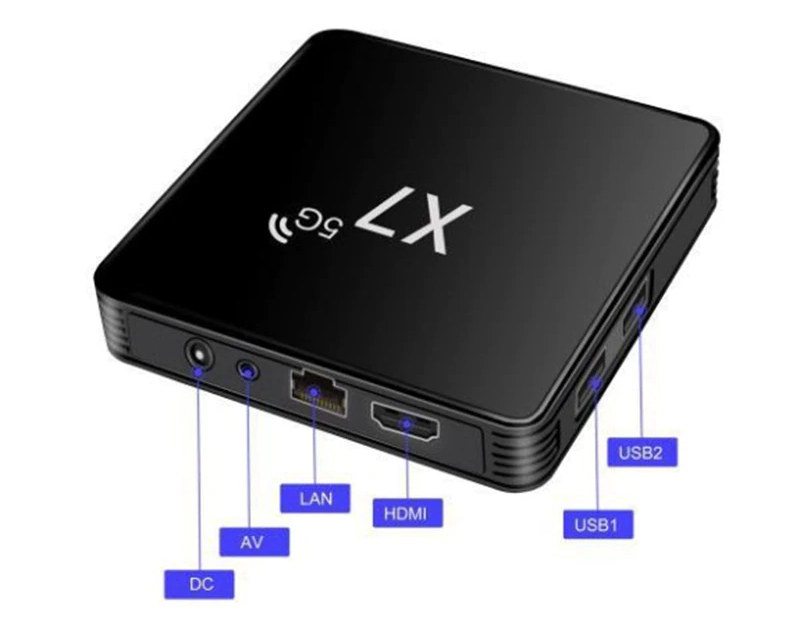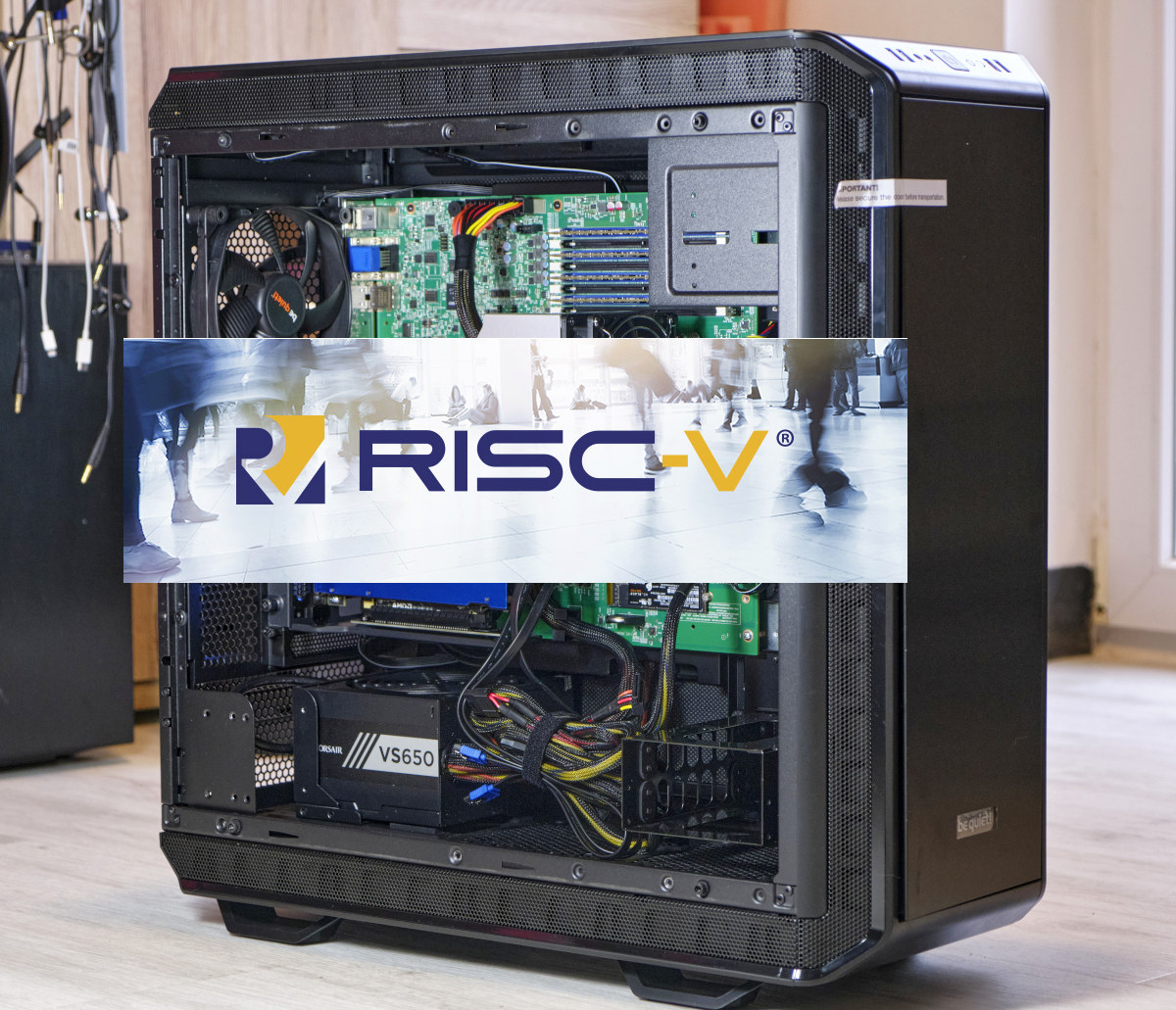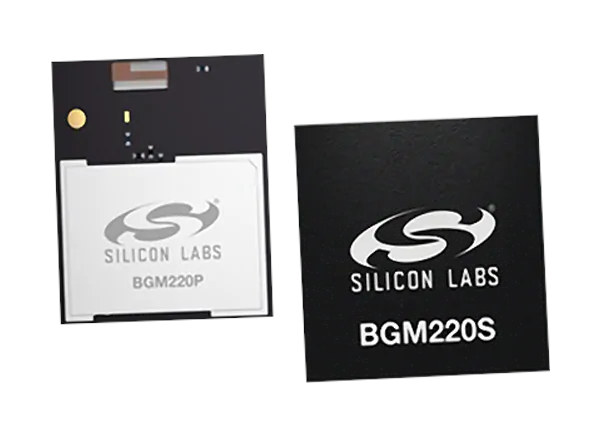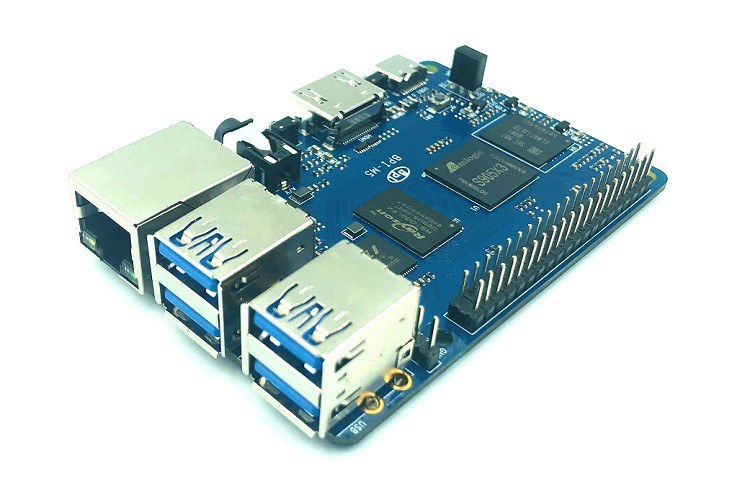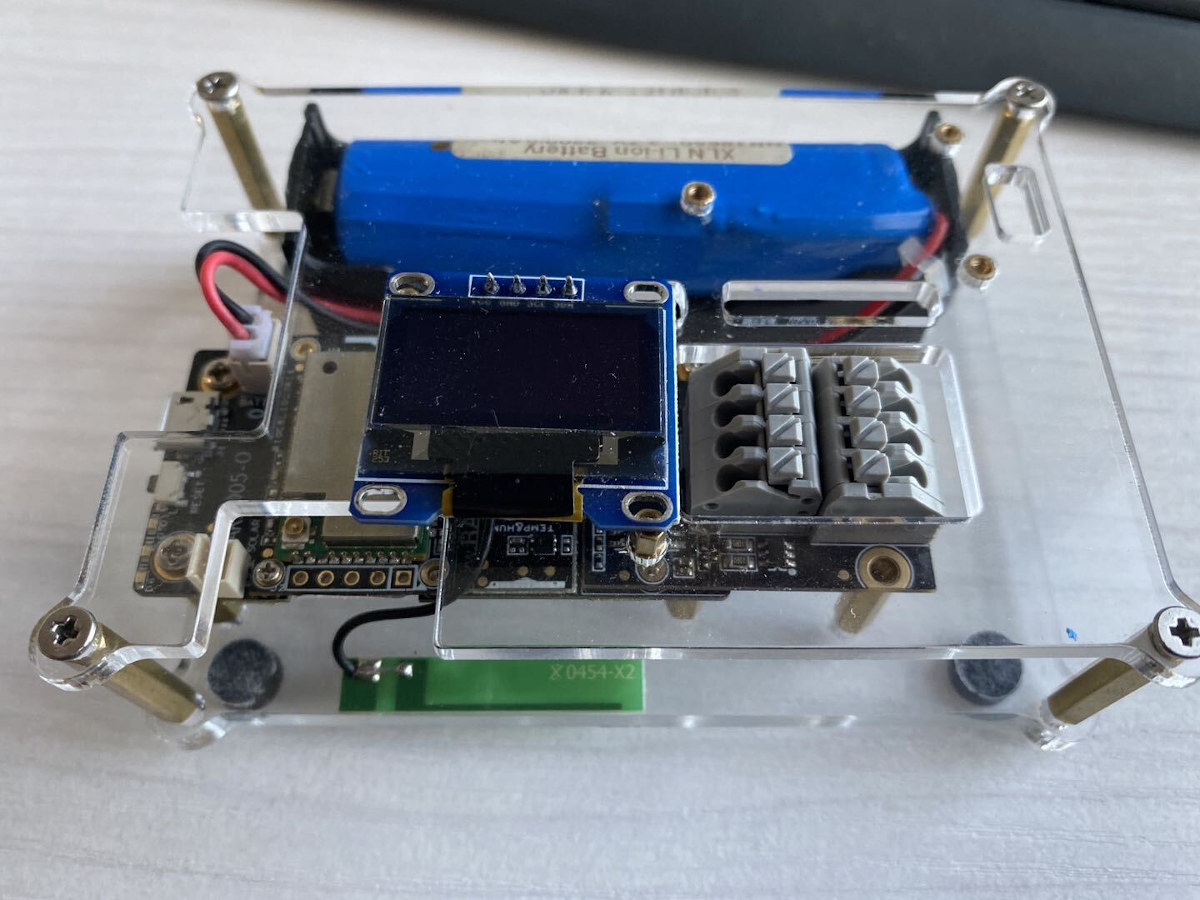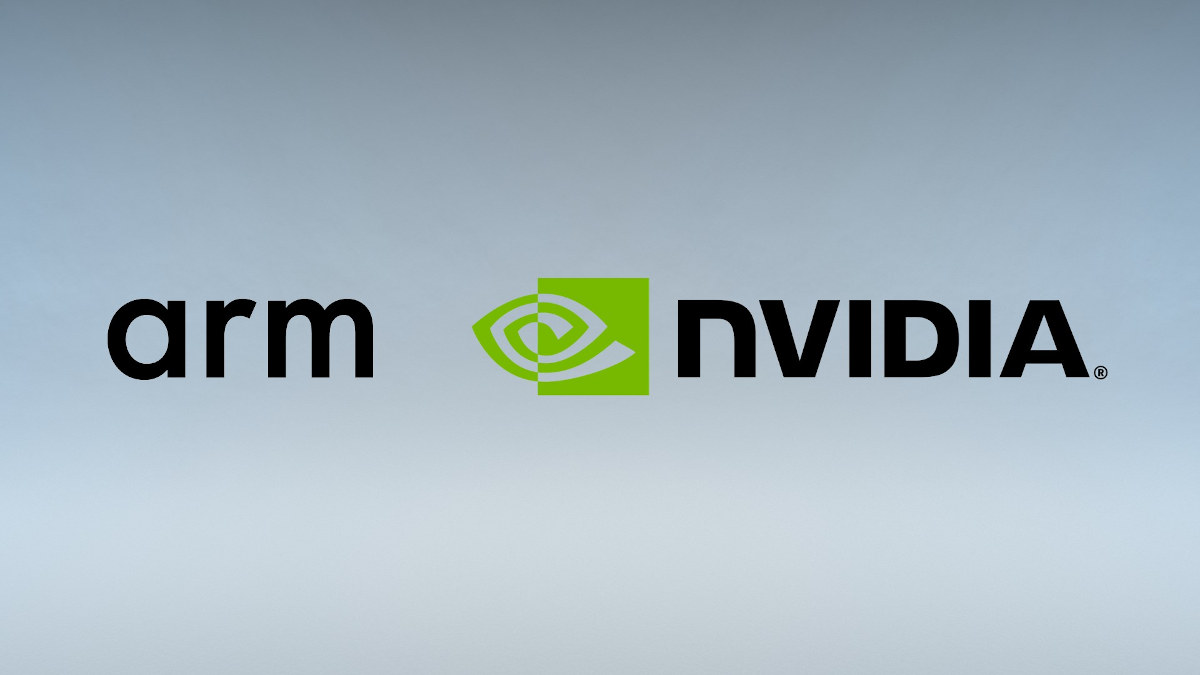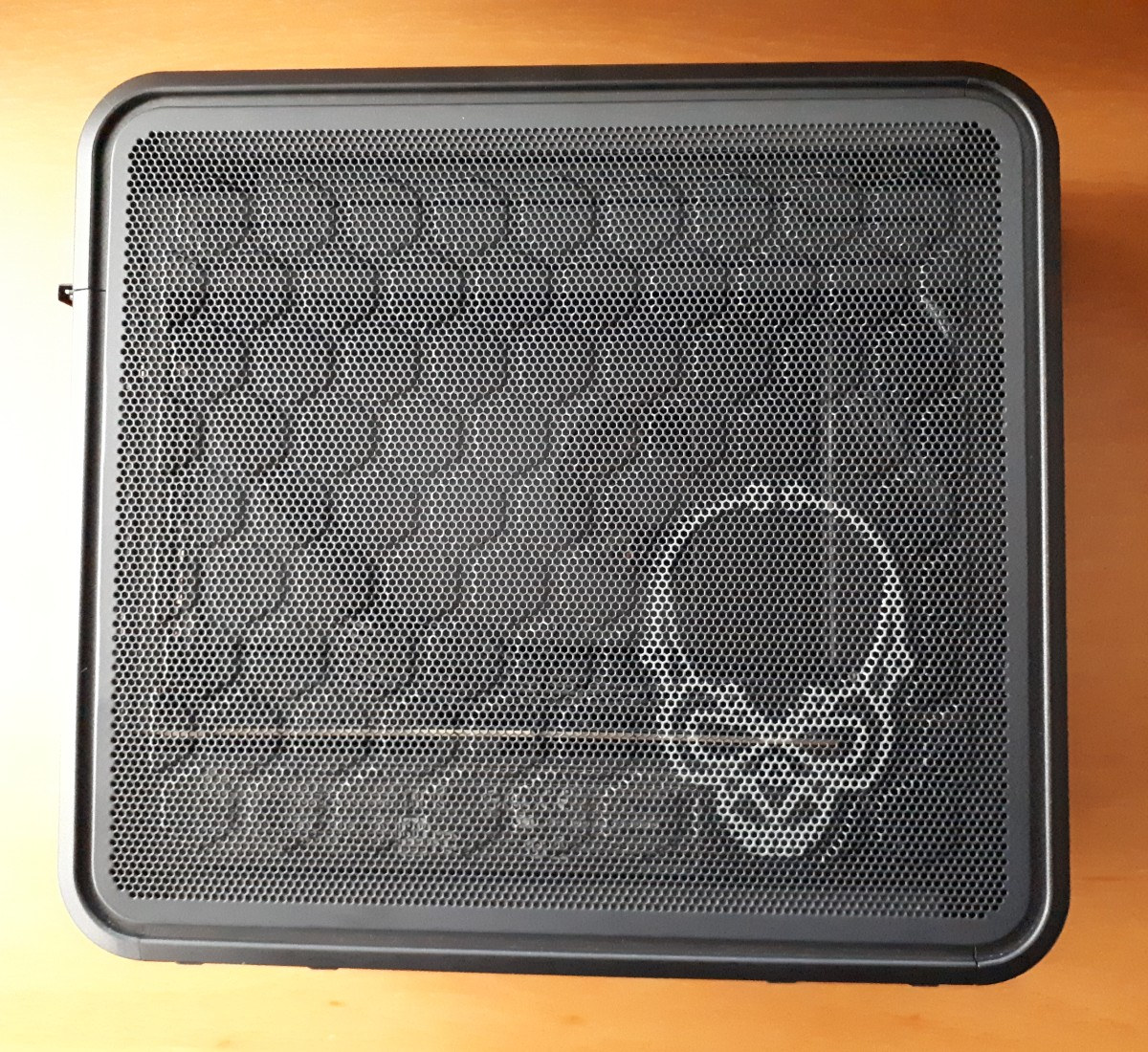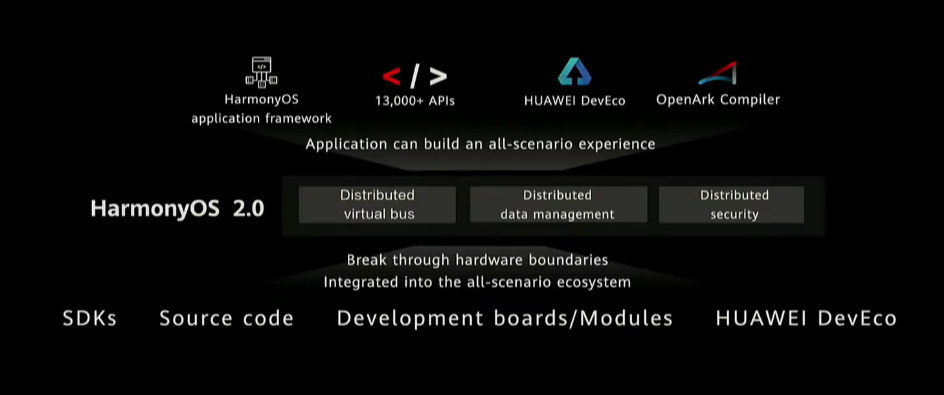Amlogic has plenty of variants to its S905 processors, and so far I had never heard about Amlogic S905L2 processor that can be found in some Android 9.0 TV boxes sold for a little over $20 including shipping. [Update: I’ve been informed people are not getting boxes with S905L2, but just S905L, nor the advertised amount of memory or storage, notably from Shop5779464] There are only two such TV boxes listed with the quad-core Cortex-A53 processor so far, and they are basically the same X7 model except for different storage and memory configuration. X7 TV box specifications: Amlogic S905L2 quad-core Cortex-A53 with Arm Mali-450 MP GPU System Memory – 2 or 4GB DDR3 Storage – 16GB or 32GB flash storage Video Output – HDMI up to 4Kp60 with HDR support, and AV port Video Decoding – 4K H.265, H.264 Networking – 10/100M Ethernet and dual-band 802.11b/g/n WiFi 4 USB – […]
SiFive to Debut RISC-V PC for Developers based on Freedom U740 next-gen SoC
In recent years, people have discussed the need to have Arm-based PCs or workstations for developers to work directly on the target hardware, and there are now several options including SynQuacer E-Series 24-Core Arm PC, Ampere eMAG 64bit Arm Workstation, and HoneyComb LX2K 16-core Arm Workstation. Now it appears we’ll soon get something similar for RISC-V architecture with SiFive to debut the first RISC-V PC for developers at the Linley Fall Processor Conference 2020 taking place on October 20-22 and October 27-29. The PC will be powered by Freedom U740 next-generation RISC-V processor that will also be introduced at the event. We have very few details about this point in time, but the company points the SiFive Freedom U740 (FU740) SoC will enable professional developers to create RISC-V applications from bare-metal to Linux-based. The processor is said to combines a heterogeneous mix+match core complex with modern PC expansion capabilities, which […]
Silicon Labs Introduces Bluetooth 5.2 BGM220S SiP and BGM220P PCB Module
Silicon Labs has recently announced two hardware modules based on the company’s BG22 secure Bluetooth 5.2 SoC, namely BGM220S System-in-Package (SiP) measuring just 6x6mm, and BGM220P, a slightly larger PCB variant optimized for wireless performance along with a better link budget for greater range. Both modules can be integrated into products with up to 10-year battery life from a single coin cell. All BGM220S/P variants can support Bluetooth Direction Finding and some of the parts can also handle Bluetooth Mesh Low Power protocol. Silicon Labs BGM220S/P key features: Wireless SoC – Silicon Labs EFR32BG22 Arm Cortex-M33 with DSP instructions and floating-point unit, up to 512 kB Flash, 32 kB RAM, 2.4 GHz radio with TX power up to 8 dBm, and Embedded Trace Macrocell (ETM) for advanced debugging Supported Protocols Bluetooth Low Energy (Bluetooth 5.2) Direction-finding Bluetooth mesh Low Power Node Various MCU peripherals include ADC, up to 25x GPIOs, […]
Banana Pi BPI-M5 Amlogic S905X3 SBC coming soon
Banana Pi BPI-M5 is an Amlogic S905X3 SBC following the Raspberry Pi form factor, and that is pretty similar to Hardkernel ODROID-C4 launched earlier this year with the same quad-core Cortex-A55 processor. BPI-M5 comes with 4GB LPDDR4 RAM, 16GB eMMC flash, and offers four USB 3.0 ports, one Gigabit Ethernet port, and on HDMI 2.1 output port for 4K/8K video output. Banana Pi BPI-M5 preliminary specifications: SoC – Amlogic S905X3 quad-core Cortex-A55 processor @ up to 2.0 GHz with Mali-G31 MP2 GPU @ 650Mhz System Memory – 4GB LPDDR4 Storage – 16GB eMMC flash (option up to 64GB), MicroSD slot up to 2TB Video Output – HDMI 2.1 up to 4Kp60 with HDR, CEC, EDID Audio – 3.5mm audio jack, digital HDMI audio Connectivity – Gigabit Ethernet USB – 4x USB 3.0 ports via VL817 hub controller, 1x USB-C port (for power only?) Expansion – 40-pin Raspberry Pi header with […]
Rakwireless Launches WisBlock IoT Modular System Beta Testing Program
Rakwireless has launched several IoT evaluation boards such as RAK4260 LoRaWAN EVB relying on WisBlock modules comprised of a carrier board and a module. So far, those were always sold as part of evaluation boards, but now the company is trying to expand WisBlock use as a modular system, so users can easily build their custom systems, LEGO style. The modular system is based on four different block types: WisBlock Base – A carrier board with connectors for other block types, power supply, some ports WisBlock Core – Module with a microcontroller/processor WisBlock Sensor – Modules with environmental sensors, motion sensors, ambient light sensors, or others WisBlock IO – Adds more inputs, outputs, or connectivity options including LTE-M / NB-IoT, cellular and Wi-Fi modules, NFC reader, and interfaces for I2C, UART, ADC, and GPIO. The company is just getting started with the solution, and initially will be offering one WisBlock […]
NVIDIA to Acquire Arm for $40 Billion from Softbank
A few weeks ago, I read rumors about NVIDIA acquiring Arm, and I thought it was probably just a joke because of the obvious conflicts of interests since NVIDIA would be providing IP to competitors, who may then be wary of starting designs based on Arm NVIDIA cores and GPUs. But guess what? That’s now official with NVIDIA writing on their blog they had a definitive agreement under which NVIDIA will acquire Arm Limited from SoftBank Group Corp. (SBG) and the SoftBank Vision Fund (together, “SoftBank”) in a transaction valued at $40 billion. I seldom write about business news, but it looks like in this case there may be repercussions. Let’s see details about the transaction: Under the terms of the transaction, which has been approved by the boards of directors of NVIDIA, SBG and Arm, NVIDIA will pay to SoftBank a total of $21.5 billion in NVIDIA common stock […]
Intel NUC 9 Extreme “Ghost Canyon” Kit – NUC9i9QNX Review
I’ve previously written about Intel’s (relatively) new NUC 9 range of mini PCs and now I am following up with my experiences of having bought one. Whilst I’ll cover some performance metrics from both Windows and Ubuntu I’ll also discuss the benefits and drawbacks of using either OS together with a comparison of gaming, thermals, and power usage as well as a brief look at overclocking potential and implications together with highlighting the issues encountered. NUC9i9QNX Hardware Overview The model I purchased and will be reviewing here is the NUC9i9QNX from Intel’s Ghost Canyon lineup and is formally known as the Intel NUC 9 Extreme Kit – NUC9i9QNX. It contains a “Compute Element” with an i9-9980HK which is an eight-core 16-thread 2.40 GHz processor boosting to 5.00 GHz with Intel’s UHD Graphics 630. The full specifications of the NUC9i9QNX include: The NUC9i9QNX is sold as a kit which essentially means […]
HarmonyOS 2.0 Beta Released, HarmonyOS Devices Coming in 2021
Due to geopolitical tensions, Huawei cannot rely on Google Android operating system over the long term, and in May 2019 we reported HongMeng OS may become Huawei’s OS alternative to Android. HongMeng (鸿蒙) OS will finally be called HarmonyOS outside of China, and we recently reported Huawei was trying to attract more developers with monetary incentives to brings more apps to HMS (Huawei Mobile Services). We now have a more clear timeline with the company’s recent release of HarmonyOS 2.0 beta that’s currently available for smart home applications, smartwatches, and head-on-displays, and will become available for smartphones in December 2020. The release includes SDKs with over 13,000 APIs, documentation, tools, and simulator/emulator. OpenArk is an open-source compiler that was released last September, and Huawei DevEco is the IDE for development that works on top of Android Studio. Huawei also introduced OpenHarmony which should be the equivalent of the Android Open […]


